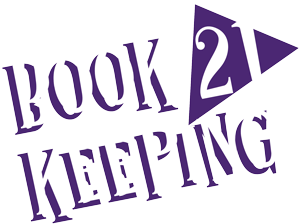The phone is ringing off the hook and email questions arrive daily in my email. Can I summarize the top “CARES Act” benefits for my small business? What should I pay attention to? Each business plan and forecast is different and plans made were tailored to fit that business. The choice of benefits offered in the CARES Act depends on how your business is affected and where you want to go from here. First, ask yourself, “What is the best-case scenario?” and the be BRUTALLY HONEST with the next question, “What is the worst-case scenario?” Then create a 13-week forecast plan for your business based on your answers to both questions.
Once you take a hard look at where you stand, then look to see what benefits the CARES Act offers for your business. As a Profit First Professional, we are trying to get you out of debt and into profitability in order to survive in the wake of a disaster – economic or not. So, please keep debt to a minimum when creating your forecast.
With that said, the last-minute Coronavirus Aid, Relief, and Economic Security (CARES) Act provides a number of benefits for small businesses.
Below are the five sections of the CARES Act I get questions on the most. For more detailed information, go to https://taxfoundation.org/cares-act-senate-coronavirus-bill-economic-relief-plan/ or download “The Small Business Owner’s Guide to the CARES act”.
The Families First Coronavirus Response Act (FFCRA or Act)
The FFCRA requires certain employers to provide their employees with paid sick leave or expanded family and medical leave for specified reasons related to COVID-19. The paid sick leave and expanded family and medical leave provisions of the FFCRA apply to certain public employers and private employers with fewer than 500 employees. Small businesses with fewer than 50 employees may qualify for exemption from the requirement to provide leave due to school closings or childcare unavailability if the leave requirements would jeopardize the viability of the business as a going concern.
Generally, the Act provides that covered employers must provide to all employees:[2]
- Two weeks (up to 80 hours) of paid sick leave at the employee’s regular rate of pay where the employee is unable to work because the employee is quarantined (pursuant to Federal, State, or local government order or advice of a health care provider), and/or experiencing COVID-19 symptoms and seeking a medical diagnosis; or
- Two weeks (up to 80 hours) of paid sick leave at two-thirds the employee’s regular rate of pay because the employee is unable to work because of a bona fide need to care for an individual subject to quarantine (pursuant to Federal, State, or local government order or advice of a health care provider), or care for a child (under 18 years of age) whose school or child care provider is closed or unavailable for reasons related to COVID-19, and/or the employee is experiencing a substantially similar condition as specified by the Secretary of Health and Human Services, in consultation with the Secretaries of the Treasury and Labor.
A covered employer must provide to employees that it has employed for at least 30 days
- Up to an additional 10 weeks of paid expanded family and medical leave at two-thirds the employee’s regular rate of pay where an employee is unable to work due to a bona fide need for leave to care for a child whose school or child care provider is closed or unavailable for reasons related to COVID-19.
For more information, go to https://www.dol.gov/agencies/whd/pandemic/ffcra-employer-paid-leave
Employee Retention Credit:
In the CARES act, Employers are eligible for a payroll tax credit of 50% of wages paid to employees during the COVID-19 crisis.
The credit is available if:
- your firm’s operations were fully or partially suspended due to a COVID-19-related shut-down order; or
- your firm’s gross receipts declined by more than 50% compared to the same quarter in the prior year.
The credit is for “qualified wages.” For a firm with up to 100 employees, all employee wages qualify, whether you are open for business or subject to a shut-down order. (For more than 100 full-time employees, qualified wages are those paid to employees not providing services due to COVID-19-related circumstances.)
The credit is for wages that are paid or incurred from Mar. 13–Dec. 31, 2020 and can be obtained even if there is no income for which taxes would otherwise be due.
The goal: to get firms to keep paying employees by reimbursing them for some or all wages paid during the crisis. Employers and self-employed can defer payment of the employer’s share of Social Security tax. The deferred amount must be repaid as follows: half by Dec. 31, 2021, the other half by Dec. 31, 2022.
An Eligible Employer may not receive the Employee Retention Credit if the Eligible Employer receives a Small Business Interruption Loan under the Paycheck Protection Program that is authorized under the CARES Act (“Paycheck Protection Loan”). An Eligible Employer that receives a paycheck protection loan should not claim Employee Retention Credits. For more information on the retention credit, go here: https://www.irs.gov/newsroom/faqs-employee-retention-credit-under-the-cares-act
Paycheck Protection Program.
The Paycheck Protection Program under the SBA allocated $350 billion meant to help small businesses (fewer than 500 employees) impacted by the pandemic and economic downturn to make payroll and cover other expenses from February 15 to June 30. Notably, small businesses may take out loans up to $10 million—limited to a formula tied to payroll costs—and can cover employees making up to $100,000 per year. The CARES Act PPP loans may be forgiven if a firm uses the loan for payroll, interest payments on mortgages, rent, and utilities and would be reduced proportionally by any reduction in employees retained compared to the prior year and a 25 percent or greater reduction in employee compensation. For more information, go to SBA Payroll Protection Program
SBA Economic Injury Disaster Loan Program
This loan-program is expanded, and loans will be nonrecourse and converted into grants when loan proceeds are used for “payroll support”—that is, for paid sick or medical leave, employee salaries, company mortgage payments, insurance premiums, and any other debts. The business must have been substantially impacted by the pandemic. The maximum loan amount is $10 million. The loan period is from Feb. 15, 2020, through June 30, 2020. For more information, go here: https://covid19relief.sba.gov/#/
Unemployment payments (UI)
For someone unemployed, benefits will be extended for 13 weeks and increased by $600 a week. Key new benefit: For the first time, UI payments will be available to self-employed persons and independent contractors. Reach out to your state unemployment office for more information: Virginia http://www.vec.virginia.gov/unemployed
I hope this helps you find the guidance you need to navigate through the CARES Act. Here is another great resource for your small business: https://www.finimpact.com/covid-19-coronavirus-smbs/
Have you created your 13 week forecast plan yet? Need help or do you want to learn more about how Profit First can save your business, please reach out by emailing clientcare@bookkeeping21.com.

